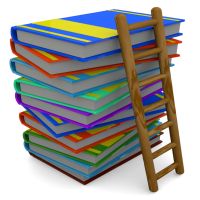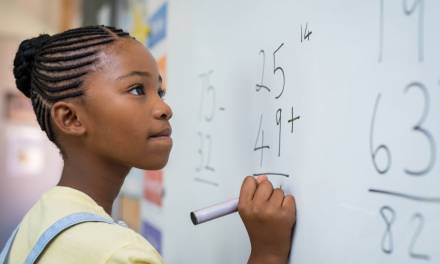Making the move from primary school to secondary is a daunting experience for many children and, as a result, it is a transition that needs to be as smooth as possible.
The percentage of pupils that received a Level 4 in their KS2 Sats results in reading, spelling and mathematics has risen slightly compared to the 2012 results. However, it is still evident that a ‘significant percentage of pupils are leaving primary school without a sufficient grasp of reading, writing and maths’, which adds more stress and strain for all the staff involved (The Guardian, September 2013).
While there is no quick fix for these issues, especially with the new curriculum and the removal of levels, we have compiled some strategies to help reduce the impact of low literacy and numeracy in the transition from KS2 to KS3:
1. Engagement
In an ideal world, the promotion of a positive attitude towards literacy and numeracy would have been initiated at home and developed constantly throughout a pupil’s education. The general consensus is that literacy and numeracy skills are something that should be taught early, which also means there are many resources and initiatives for primary schools.
Studies suggest that those who read for pleasure are also better at maths, although fewer children are now reading in their spare time (BBC, 2013). Some ways in which you could increase engagement in numeracy and literacy include using a variety of activities and resources such as technology, videos, puzzles and games to help keep pupils engaged at all levels.
2. Cross-Curricular approach
Incorporating literacy and numeracy into all subjects is a method which should be present throughout the curriculum as a whole rather than simply acting as a method to assist the KS2 to KS3 transition.
‘The National Curriculum demands that connections be made between each strand and across subjects, which calls for thought and understanding, for recall, selection and analysis of ideas and information, and for coherent, considered and convincing communication in speech and in writing’
The more that pupils can practise speaking, writing and listening in a variety of contexts, the better prepared they will be for the schemes of work for the next key stage. This approach also allows application of knowledge, ensuring that pupils aren’t simply memorising facts.
3. One-to-one
This should include monitoring, evaluation, planning and structure. Both at the end of KS2 and the beginning of KS3, work should be done on a one-to-one level so that any issues can be identified and a plan can be put in effect to address these issues.
Track pupil progress and use the collected information to identify weaknesses and put in strategies to overcome these specific, individual problems. This process is invaluable, as research has proven that “low attainers in mathematics benefit from detailed assessment of their learning needs” (Dowker, 2004). Use a range of approaches and incorporate both formative and summative feedback.
4. One size doesn’t fit all
Remember that what works for one pupil may not work for another, so trying a mixture of methods can be useful in identifying how to get the best out of your pupils. In KS2, encourage paired work, mixing abilities so that high and low performing pupils can address the issues they are struggling with.
Working in small groups may be useful to some so that pupils are able to share ideas in a supportive environment but ensure independent study is also incorporated as preparation for KS3.
5. Bridging schemes of work
Identify the children that may need more help in certain areas and ensure this information is relayed between primary and secondary school. Ensure the work is bridged; familiarity between schemes of work will reassure pupils as opposed to them feeling that they are being ‘thrown in at the deep end’.
In a research project published by the Dfe in 2007 What Makes a Successful Transition from Primary to Secondary School, emphasis is placed on the importance of communication in ensuring a smooth transition for all pupils; ‘Children need to understand what is expected of them in secondary school, be prepared for the level and style of work, and be challenged to build on progress at primary school.’
Sharing information is considered key for this, therefore any support given to individual students in primary should be continued into secondary school. Cross-school teacher visits would benefit the class as a whole in their transition to secondary to put pupils’ minds at ease, which will have a positive effect on academic work, especially for this new curriculum to aid the transition process for all involved.










